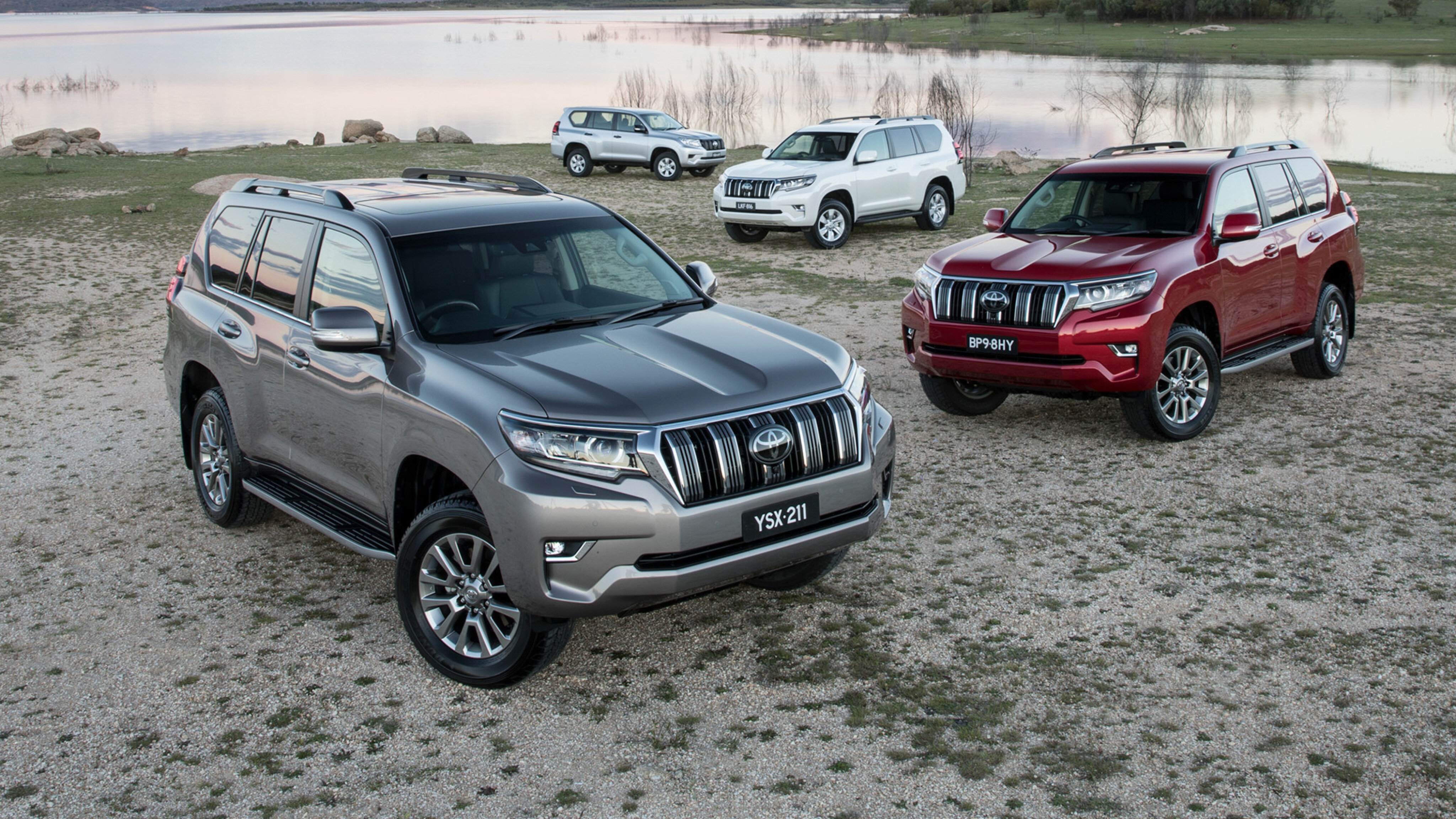
It has been over a week since the reveal of what will be the first all-new Prado in nearly 25 years, with the first photos and some general info of the 2024 model.
Get up to speed on the new Prado
The stories below will give you a guide to everything we learned about the new Prado when it was unveiled. All fresh stories published since then will be found on our Toyota Prado model page here.
2024 Toyota Prado coverage
- 2024 TOYOTA PRADO REVEALED
- Spec battle: New Prado v LandCruiser 300 Series
- Spec battle: New Prado v Old Prado
- Spec battle: New Prado v new Ford Everest
- 2024 Toyota Prado: Everything we know
- What is the towing capacity of the new Prado?
- New Prado: What YOU think so far!
- BONUS: New 70 Series facelift revealed
- A 2025 Prado ute? Yes please!
- ALL PRADO NEWS & REVIEWS
JUMP AHEAD
The expected wide range of reactions has followed, from those crying the death knell of the model even before it lands mid next year, through to those excited by the style and design, if a little underwhelmed by the carry-over 2.8TD (with hybrid assist) as the engine choice for this market. To us, and noting it is very early days, the new Prado looks exciting with plenty of promise.
So should buyers wait? Well, that’s more difficult to answer, and shines the light on the other option of buying a second-hand Prado. To answer this, you need to decide whether you want to go second-hand or nab a new 150 Series – if you can find or wait for one.
Going the second-hand route opens up a raft of options, from the cheap and cheerful - but long in the tooth - 90 Series, the near-iconic 120 Series, or a used version of the longest-serving Prado, the 150 Series.
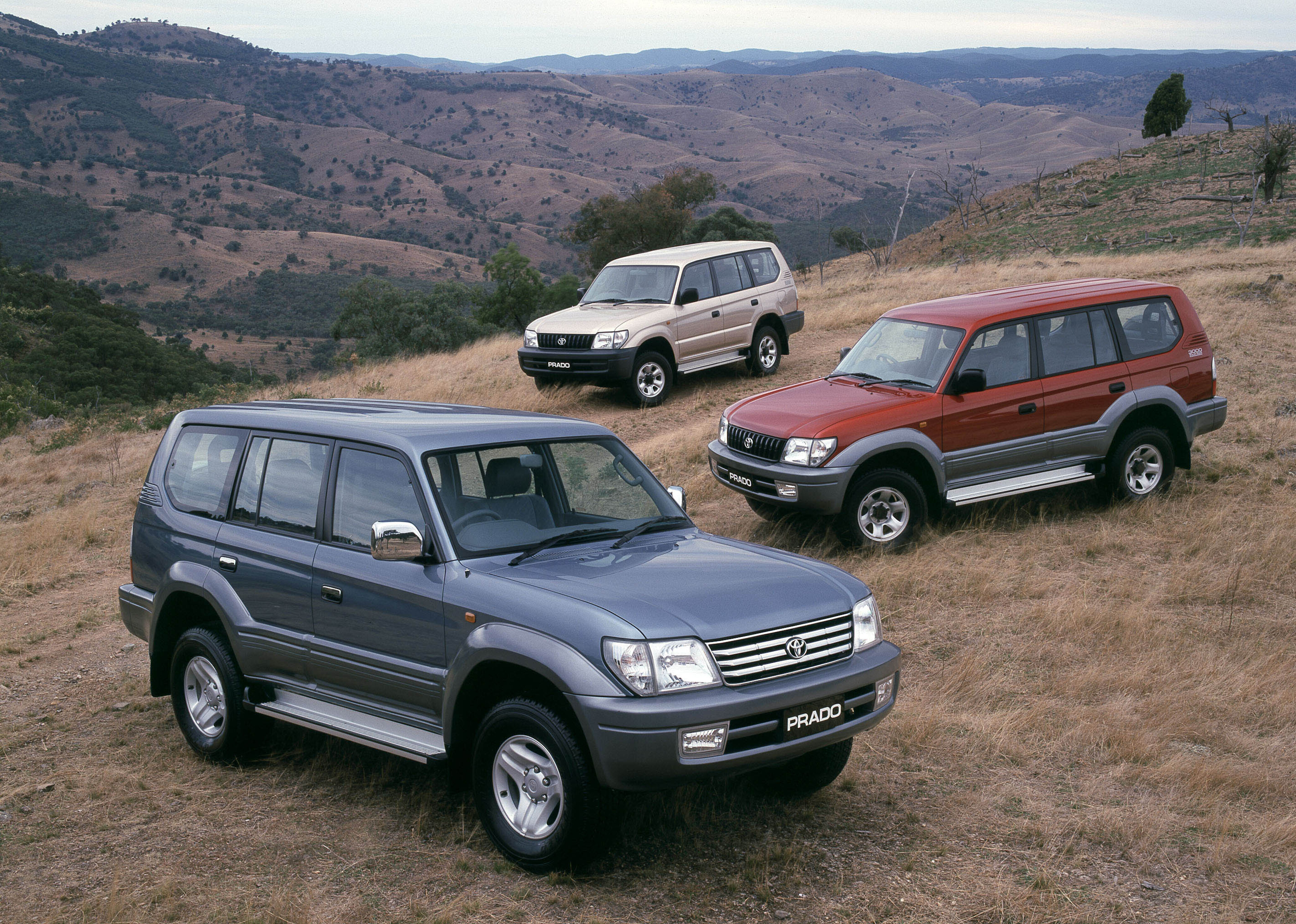
Even now, close to 15 years since the launch of the current 150 Series, the LandCruiser Prado is still the mid-size 4x4 wagon king in Australia. In fact, the past five years have been the best sales results ever for Prado, and you could point a finger at a few potential reasons why, beginning with the fact its major long-term competitor – Mitsubishi’s Pajero – is now no more.
The obvious ‘new’ contender is Ford’s latest Everest, especially with its 3.0-litre TDV6 spec; but for some, the Everest is still seen as a ‘ute-based SUV’, as if that moniker suddenly renders that vehicle lesser than a true 4WD wagon design as the Prado is viewed.
Regardless of all of that, the fact is, ever since its official launch in Australia back in 1996, Aussie buyers have flocked to the Prado. Along the way they have excused some potentially serious problems that would be deemed inexcusable for other brands, for the Prado to reach a total local sales figure (as of July 2023) of 380,192 vehicles. Yep, that’s bloody impressive.
In short, whether families, hardcore tourers or whomever, Aussies are super-keen to get themselves into a Prado; brand-new, or second-hand. It’s just a matter of deciding which one is your best option.
Toyota Prado 90 Series
It was 1996, and the Mitsubishi Pajero was proving that new-vehicle buyers were surprisingly amenable to a mid-size off-road wagon that was equally comfortable on the bitumen. Toyota, of course, already knew this; the first-gen Prado, with live axles front and rear, and a choice of three- or five-door variants, had been introduced to a number of overseas markets but not here.
This short moment of market inattention by the Big T was addressed with the 1996 launch of the 90 Series “LandCruiser Prado”, Toyota cleverly leveraging the iconic LandCruiser nameplate when badging this mid-sizer for the Aussie market.
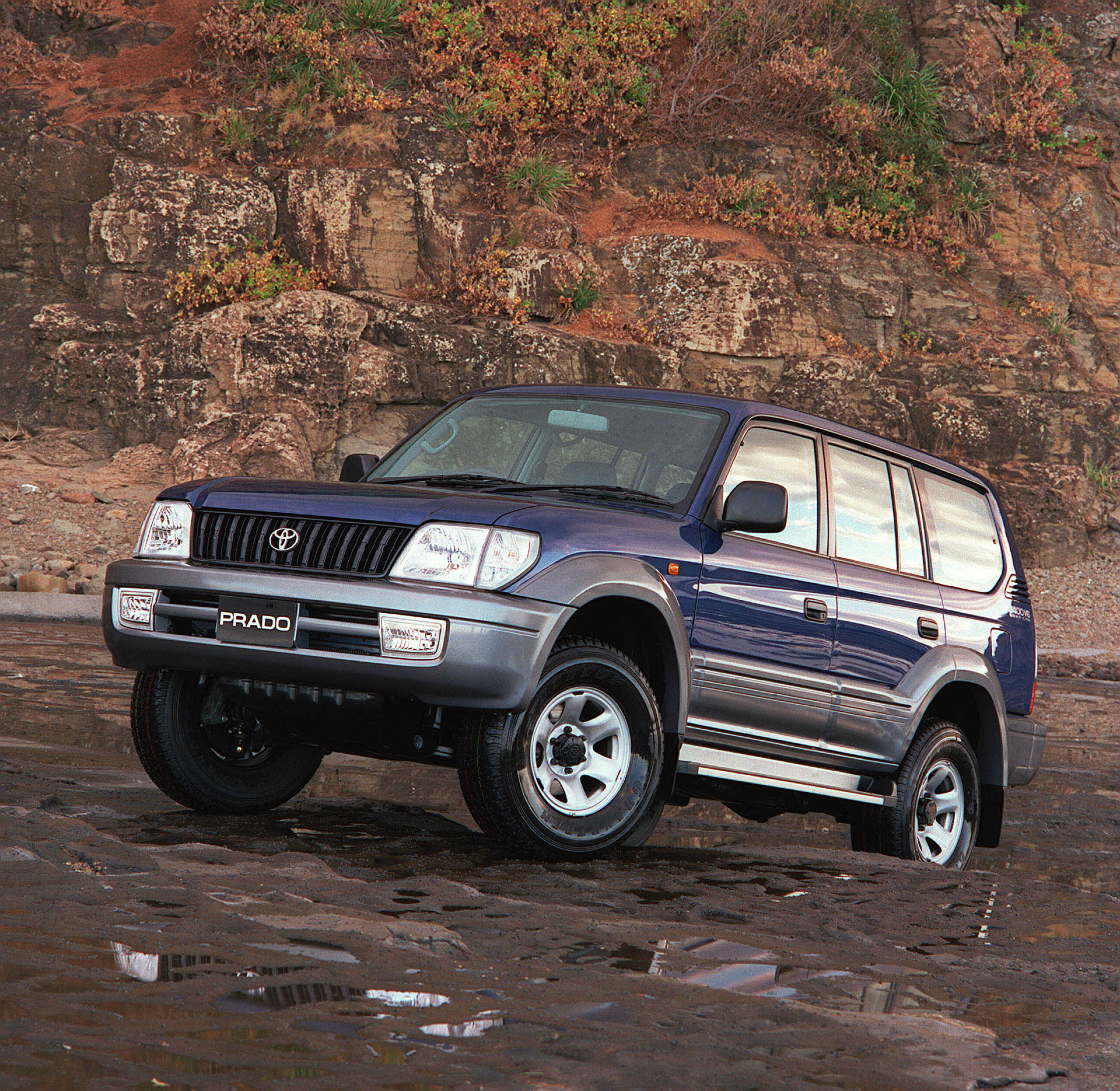
The 90 Series debuted with a live-axle rear and an independent front setup, combining to provide a more ‘car-like’ driving experience – and a small turning circle (11.6 metres) for those pesky city/school car parks – without sacrificing too much off-road capability.
This ‘new’ mini-Cruiser also offered seating for up to eight occupants, thanks to third-row seating that conveniently folded up to the sides (albeit at the cost of cargo space).
The vehicle launched with two petrol engines – a 3.4-litre V6 and a slightly anaemic 2.7-litre four-cylinder – and a surprisingly large 159-litre fuel tank, allowing the Prado to lug more fuel than even its big-brother 100 Series LandCruiser.

A diesel version of the 90 Series didn’t lob until March 2000, in the form of the 96kW/287Nm 3.0-litre (1KZ-TE) intercooled four-cylinder, with indirect injection, and backed (initially) by a five-speed manual gearbox. A four-speed auto box became an option in October 2000, bringing the total number of diesel Prado models to eight of the 16-model range.
Buying a second-hand Prado 90 Series
The 90 Series models are relatively cheap but come with the caveat of an ageing body and mechanicals, as well as lower levels of safety tech (which may, or may not, be an issue).
Still, for a relatively low entry point, you can get into a more-than-capable tourer, with a simpler, well-proved diesel powerplant, or that fun V6 petrol. Aftermarket manufacturers still offer some accessories for this model, so that cheaper entry price does leave wiggle room for spending on the fun stuff.
Pricing on the major online second-hand vehicle sale sites sees a private sale 2001 3.0-litre turbo-diesel, with 147,000km on the odo, at an asking price of $17,000, with a jump to a very low-kay (107,000km) 1996 3.4-litre V6 petrol VX Grande sitting at a dealer with $26,990 on the window. Unless you really want to punish yourself, steer clear of the 2.7-litre four-cylinder petrol.
Toyota Prado 120 Series
In 2003, Toyota launched the larger, roomier, safer and more refined 120 Series, with the 3.0-litre turbo-diesel and the 2.7-litre petrol from the 90 Series initially carrying over and being joined by a stonking all-alloy 4.0-litre quad-cam V6 petrol (dubbed the 1GR-FE) that pumped out 179kW and 376Nm, while being fed go-juice via a monster 180-litre fuel capacity courtesy of an 87-litre main and 93-litre sub tank.
This generation of Prado also received updates to its Driver-Assist Technology (DAT), featuring Active Traction Control (A-TRC), vehicle stability control, Hill-start and Downhill Assist Control, and continued on with full-time 4WD, with the drivetrain now using a Torsen centre diff.

The model range included the base-spec GX (five-seats only), GXL, VX and Grande, with the Grande also featuring electronically controlled self-levelling rear air suspension. Third-row seating was standard from GXL up, while leather seating was only available in VX and Grande.
The 120 Series proved hugely popular in 2003, with sales nearly doubling from the previous year to 14,639 vehicles, and saw the Prado become the best-selling overall four-wheel drive vehicle (including SUVs) from May of that year. Incremental changes through the first few years of the 120 Series resulted in the original four-speed auto backing the 4.0-litre V6 receiving an extra ratio for a modest increase in economy, but a notable upping of overall driveability.
Perhaps surprisingly, even with a well-proven diesel option, petrol variants remained the best-seller for the Prado up until 2006, when diesel sales finally accounted for more than half. Coincidentally, it was this year that saw the 120 Series receive a more modern and powerful DOHC common-rail direct-injection 3.0-litre turbo-diesel engine, the 1KD-FTV.

This new oiler was impressive; a 32 per cent jump in power to 127kW (at 3400rpm) and the higher (by nearly 20 per cent) peak torque of 410Nm was available at a lower point (1600rpm) in the rev range, and it made it more flexible for off-road driving. Backed by either a six-speed manual or slick five-speed auto (with a new gated shift), this new donk seemed like the perfect powerplant for long-distance off-road touring, with far better fuel economy compared to its predecessor.
It was this last incarnation of the 120 Series, from 2006 through to 2008, that saw the biggest boost to the Prado’s reputation as a great off-road tourer option, and one that was also easy to drive around town. The comfortable ride, decent on-road handling, long-travel suspension, modern engines with well-matched gearboxes, bush-friendly 17-inch wheels, copious aftermarket accessories, a spacious interior and an extensive nationwide dealership network all offset a much smaller list of negatives. These included the side-mounted third-row seats, which eat into rear cargo space, the low 2500kg braked towing capacity, the still-considerable thirst of the V6 petrol, and the 1KD-FTV’s infamous ‘injector issue’. Speaking of which…
With modern diesel engines comes complexity, which can lead to unforeseen problems. In the 1KD-FTV’s case, this was the motor’s injectors – or, more accurately, the injectors and their seals. Originally, the seals were made from copper and, when they failed, they would then allow excess gases into the engine where, mixed with oil, it’d create a build-up of carbon which would, in turn, block the engine’s oil pick-up. We all know what happens when an engine has no oil.
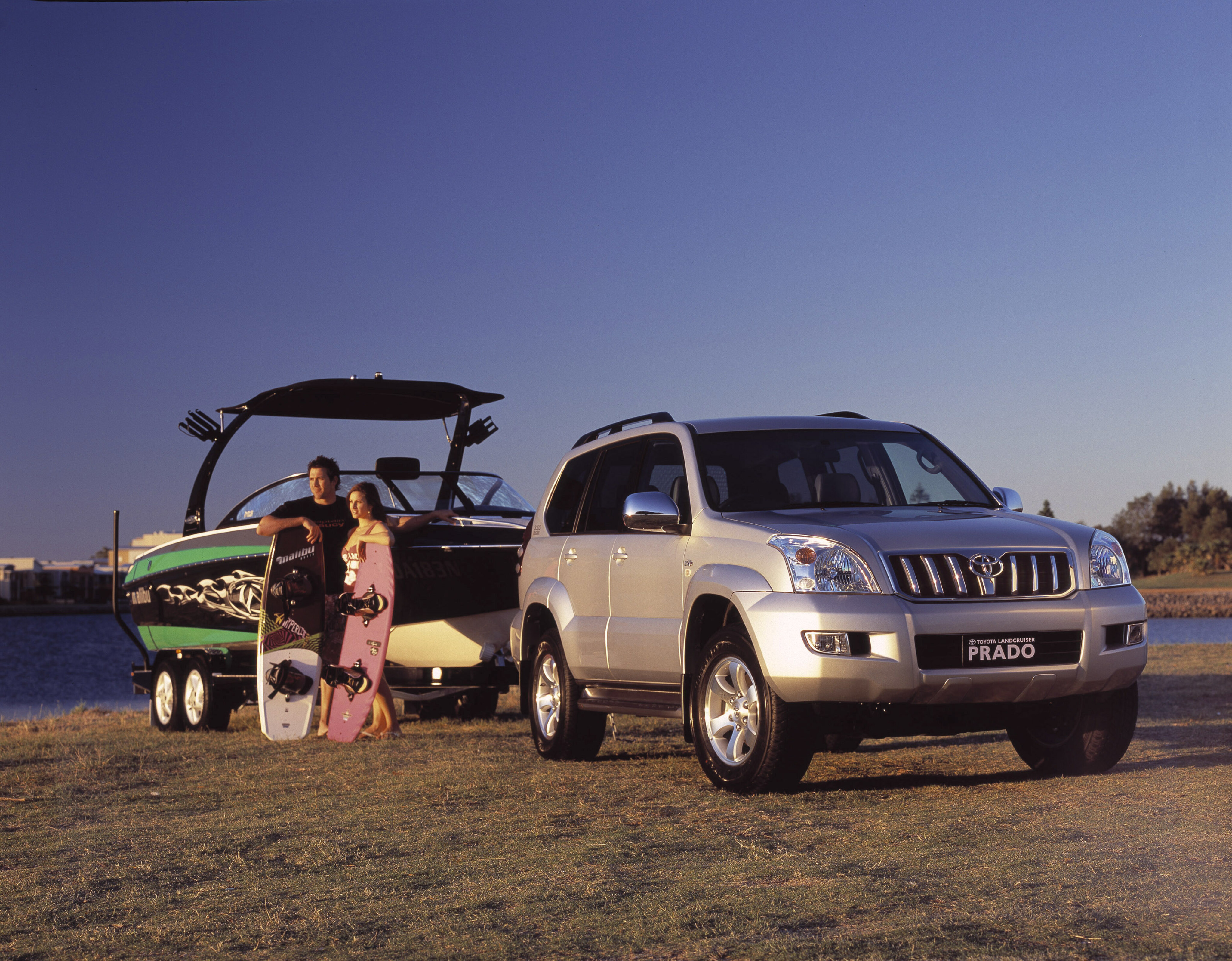
The injectors themselves are also known to either outright fail (it is recommended the tolerances are checked every service and they are replaced very 100,000km regardless) or ‘stick’ open, again causing an oft-fatal flood of fuel into a cylinder chamber.
Yep, it sounds scary – and bloody expensive – but it is also a prime example of ensuring your vehicle (regardless of make/model) is regularly serviced and any pre-emptive modifications are done. It should also be noted that, for every 1KD-FTV-powered Prado (both in 120 Series and 150 Series form) that has failed, there are thousands out there that have happily clocked up hundreds of thousands of trouble-free kilometres.
Buying a second-hand Prado 120 Series
Yes, you will need more dosh to get into a 120 Series compared to snaring a nice 90. But, regardless of whether you are looking for one of the ‘old’ 3.0-litre oilers (2003 to 2005), that rorty 4.0-litre V6 petrol, or the post-2006 update common-rail 3.0-litre diesel donk, with the increased sales of that model, you will have a wider range to choose from.
If you’re keen on the V6 petrol, do yourself (and your wallet) a favour and bypass the earlier four-speed auto versions; the five-speed auto (or the rarer six-speed manual) behind that engine will offer at least a modicum of ‘acceptable’ fuel consumption.

Most touring-oriented buyers, though, will look to the 3.0TD engine. Even allowing for the injector issue, this engine’s power and torque, in a relatively lightweight wagon and backed by that 180-litre fuel capacity, make for a brilliant base from which to start a tourer project build – just be sure to check the vehicle’s service history, and ask if the injectors have been replaced during the previous owner’s tenure. Pricing for this engine option is highest in the 120 Series range, with low-kay examples asking mid-$30K pricing.
It’s here you may need to do the sums; a 4.0-litre V6 of equivalent spec and odo reading is around $5K to $10K cheaper, and that pays for a lot of petrol. Plus, that engine is renowned for its durability, with no big ‘issues’ in its history, and we’ve heard of a number of examples ticking over 300,000km and more, and still going strong.
For those looking for more ‘luxury’ in their 120 Series, the VX and Grande are the two model specs to focus on, with leather interiors and better sound systems. However, be aware that the Grande’s self-levelling rear suspension, while excellent in operation, makes fitting an aftermarket suspension system a much bigger (and more expensive) task than the coil-sprung models. For any other off-road touring mods, there are oodles of aftermarket suppliers who produce gear for this popular vehicle.
Toyota Prado 150 Series
It’s a credit to Toyota’s designers and engineering teams that the 150 Series has, firstly, stayed at the top of its market segment for close to 15 years up to now and, secondly, during that near decade-and-half, Toyota has not rested on its sales laurels, subjecting this model to a number of tweaks over the years.
The 150 Series was launched in 2009, with both a five-door and three-door model on offer. Five-door badges were GX, GXL, VX and Kakadu (replacing the Grande nameplate), with the 150 presenting slightly wider, lower, longer and notably heavier than its predecessor, albeit retaining the approach, ramp-over and departure angles of the previous gen.

That extra heft brought a raft of improvements including better safety tech (seven airbags across all models, up from two), an all-new more comfortable and spacious interior (at last, the third-row seats folded flat under the cargo floor; seating capacity drops to seven, though), a lift in standard features per spec level (including three-zone aircon on GXL, VX and Kakadu), ‘Multi-terrain ABS’ (self-adjusting ABS dependent on terrain surfaces), and even adaptive cruise control, albeit only on the top-tier Grande and three-door ZR (yep, there was a three-door; the ZR and the lower-spec SX).
Unfortunately, the extra weight also meant less payload, the fuel capacity dropped to 150 litres, and the braked towing capacity stayed at 2500kg.
Motor-wise, there was further tickling of that big-bopper 4.0-litre V6 petrol, with more power and torque (202kW/381Nm) and – hallelujah! – better claimed fuel economy (11.5L/100km for the five-speed auto) thanks to the adoption of dual intelligent variable valve timing (Dual VVT-i). The 3.0TD also copped a small change; with a nod to the injector dramas seeing new injectors fitted and moving the intercooler from the top to the front to aid cooling.
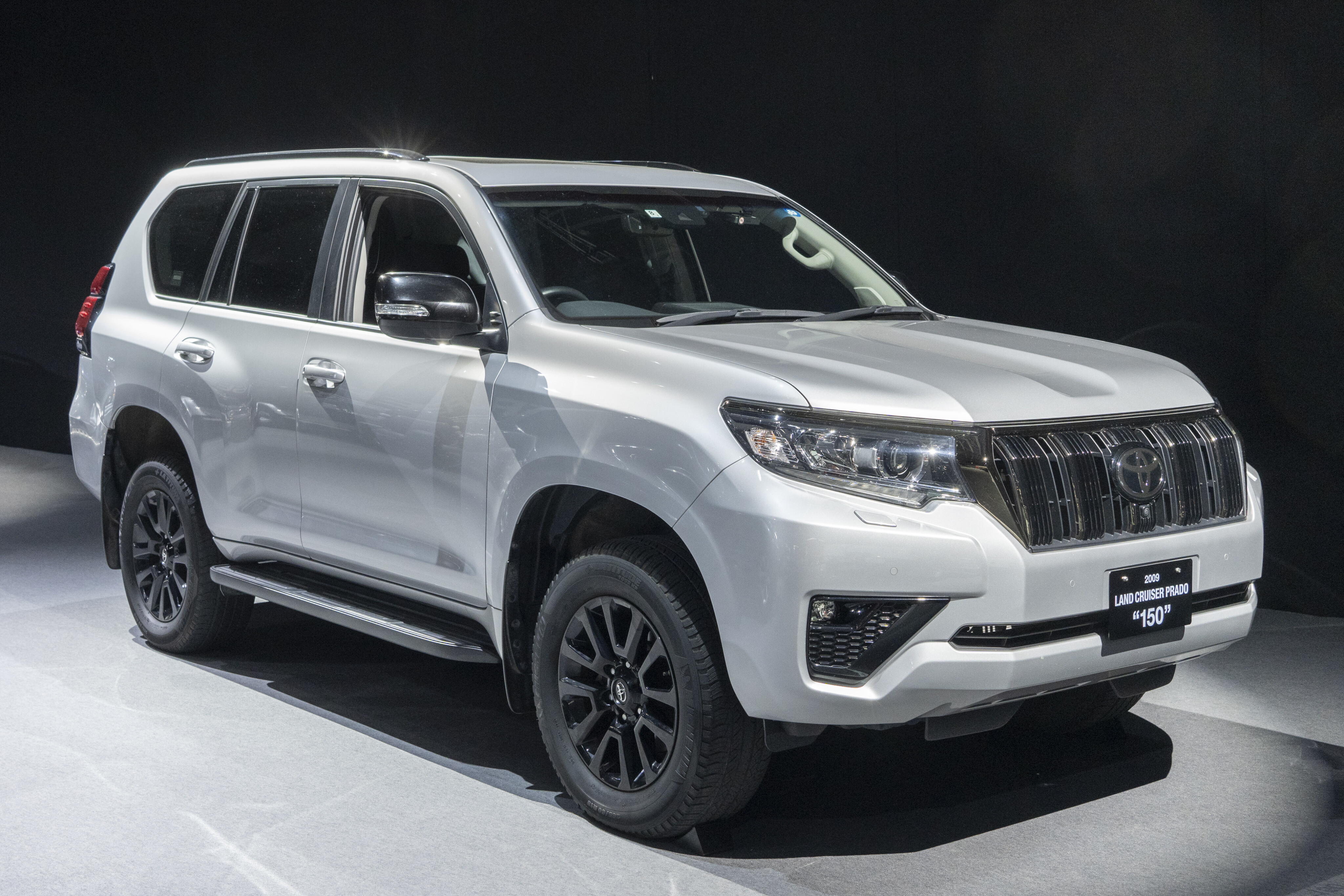
As expected, the Prado’s well-proven IFS front end/live axle rear combo carried over (with revised spring and damper rates) in all models bar the top-tier Kakadu (which kept its predecessor Grande’s self-levelling rear suspension). The Prado’s excellent traction control system was also (again) improved.
Both Kakadu and VX now featured Toyota’s KDSS (Kinetic Dynamic Suspension System – more on that in the 150 Series buying guide, below), with the Kakadu version of KDSS adding adaptive variable suspension. Kakadu (and ZR) also now included Toyota CRAWL (basically a low-speed cruise control for off-roading), along with Multi-Terrain Select (with five off-road driving ‘modes’) and Multi-Terrain Monitor, too. Yep, the Prado was going high tech.
It was not until 2015 we saw the next major Prado update – an extra 5kW for the now low-selling 4.0L V6, and the arrival of the new 2.8-litre 1GD-FTV turbo-diesel engine, backed by an also-new six-speed automatic. Offering 450Nm (in six-speed auto form; 420Nm for the six-speed manual) at 1600rpm and 130kW, the new oiler was also very fuel efficient. This was attributed to both the new engine and the new gearbox, although the six-speed auto’s two overdrive gear ratios (5th: 0.67 and 6th 0.58) caused a few dramas as the ’box would not always shift into that very tall sixth gear unless you were exceeding some speed limits!
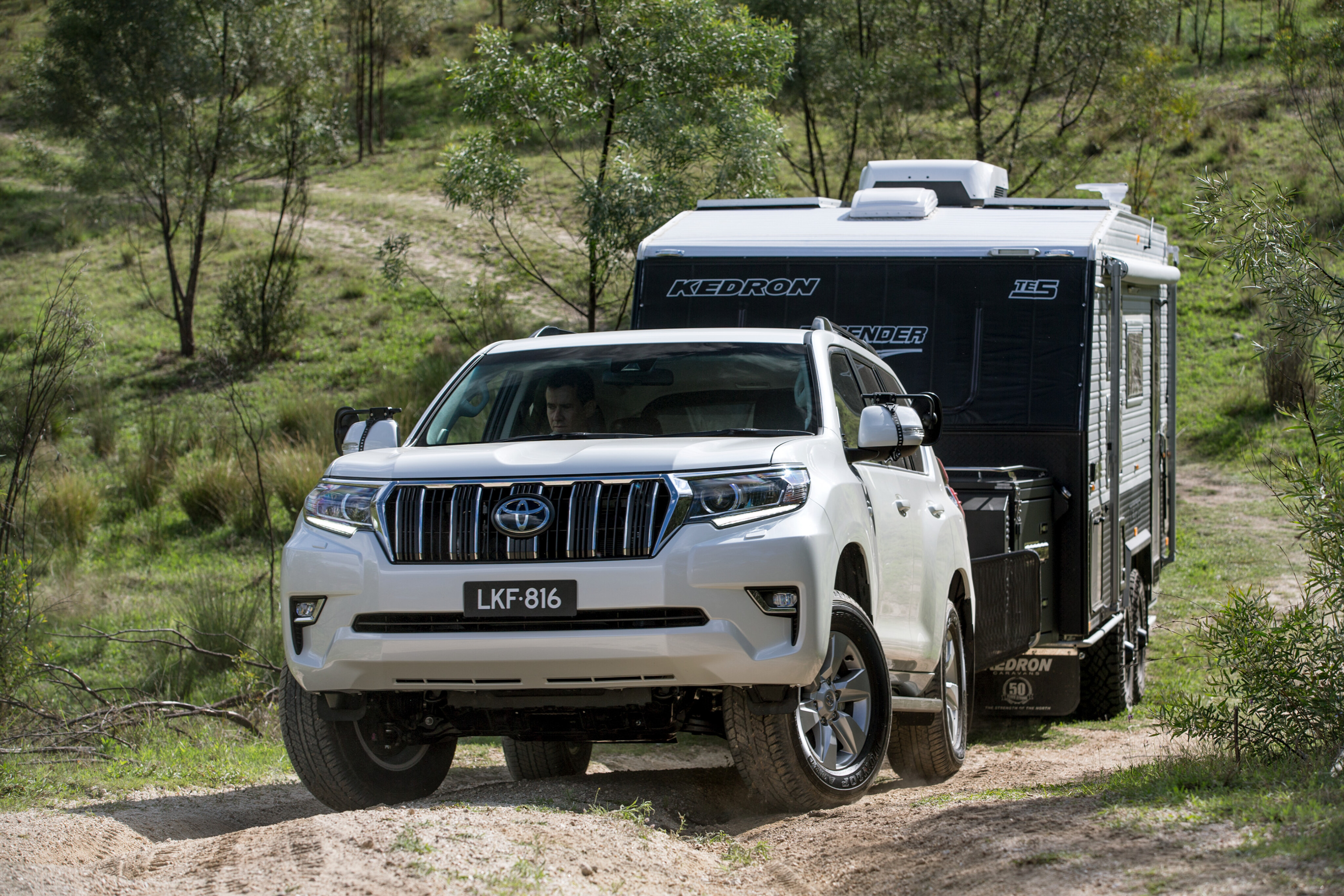
Another update followed in late 2017, featuring the latest 150 Series exterior styling, but Toyota sadly dropping the beloved 4.0-litre V6 petrol. An easy decision as it turned out, with only 1.2 per cent of Prado sales now petrol models. Braked towing capacity was increased to 3000kg in this year update, too.
August 2018 saw a very hush-hush dropping of KDSS from VX models, an upgrade of the lower-spec models (GX and GXL) to the safety tech previously available only on VX and Kakadu, and the appearance of a ‘flat-back’ Prado; with removal of the sub-tank (dropping fuel capacity down to 87 litres) and fitting the spare underneath, Toyota could offer a rear door that, although it still opened sideways, at least now offered a lift-up rear window for easy access to the cargo area. It’s been very popular.
As with the 3.0TD, the 2.8TD was not without issues, the main one being a faulty Diesel Particulate Filter, in vehicles built between 2015 and 2020. In very basic terms, the DPF is designed to reduce emissions by collecting particulates and then ‘burning’ them, a process Toyota dubs ‘regeneration’. Unfortunately, this did not work and the DPF would pack up with unburnt particulates, causing everything from increased fuel consumption to the now infamous white smoke from the Prado exhaust. After two cracks at it, Toyota looks to have resolved the problem.

The last – and now final – update to the Prado 150 Series happened in late 2020, with the big news being a bump in grunt to 150kW/500Nm, the result of a mini-overhaul of the 2.8TD covering new turbo (with a larger turbine and impeller), cylinder block and head tweaks, and an increase in fuel-injection flow rates. The end result was a smoother delivery of grunt, with the maximum torque spread now going from 1600rpm to 2800rpm.
Other improvements included a final resolution to the abovementioned DPF issues, a new multi-media system (yes, you could now use Apple CarPlay), rain-sensing windscreen wipers, and another increase in safety systems.
New diesel outputs aside, you’d think there wouldn’t be much buyer interest in buying what is, sort-of, now a 15-year-old vehicle. But you’d be wrong; 2022 and the first half of 2023 have seen the highest sales ever for Prado. The 150 Series may have been around for what seems like forever, but incremental improvements (and fixes) have kept this best-seller at the top of the market. The 250 Series has a lot to live up to.
Buying a second-hand 150 Series Prado
If you have a slightly larger wad of cash, the 150 Series Prado is well worth the additional outlay; but, as with the 120 Series, comes with those diesel-related caveats attached, whether you’re looking at the 3.0TD or the 2.8TD from 2015 to 2020 (in relation to the DPF).
The 150 Series is arguably the most capable Prado off-road straight from the showroom floor. It is also probably one of the most modified touring vehicles ever in Australia, with every 4x4 aftermarket manufacturer producing tons of goodies for this rig.
As mentioned, it is wider, lower and arguably more comfortable and capable on- and off-road, but also heavier. Balancing that was the increase in safety tech (both internal and external), better claimed fuel economy, general build and mechanical improvements, along with that welcome tweak to the 4.0-litre V6 in terms of efficiency (if you’re looking for the V6).
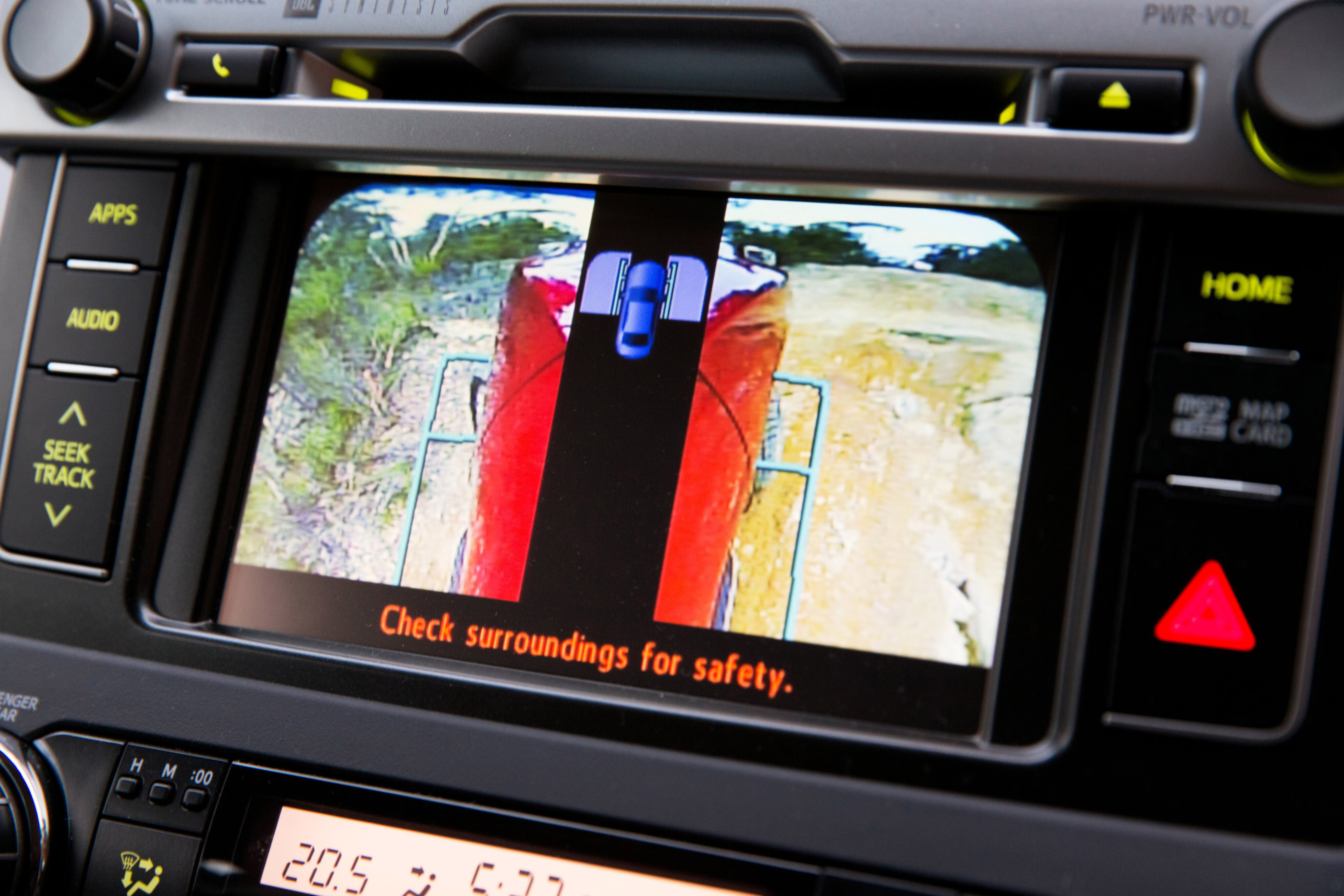
As with any second-hand purchase, a check of service records is a must, and especially so with the two diesel options. A 3.0TD Prado GXL may look amazing value for money compared to the ‘newer’ 2.8TD, but be sure to ask about the injectors, i.e., have they been checked regularly at service intervals and/or been replaced.
Same goes for any 150 Series built in the years/months covered by the DPF-related dramas. Both of these issues sound very dramatic – and they certainly can be that, plus very costly – but on the whole, most Prado 150 Series, if properly serviced/looked after, will provide many years of reliable on- and off-road fun.
Pricing for Prado 150 Series varies widely, simply due to this model having been around for so long. A peek at some online vehicle sales sites sees prices include a $30L 3.0TD GXL with 172,000km on the odo, to a $49K 2015 2.8TD Prado with 106,000km, through to a 2021 2.8TD VX with only 30,000km on the odo (and four more years of new car warranty).
So, in short, there are plenty of 150 Series out there and, as per usual, it will depend on both your budget and your engine preferences.
From the experts
Dean Mellor, 4X4 Australia editor (2003-2009)
“The first Prado launched in 1996 was essentially a better Pajero, and with Toyota’s unequalled sales and service network throughout Australia it’s little wonder it was an instant sales success. Over the past three decades the Prado has remained at the top of the sales charts thanks to offering customers a family-friendly wagon that is equally as competent on the road as it is off it, and although it has never excelled in any one area, it is certainly a jack of all trades.”
Justin Walker, 4X4 Australia editor (2010-2012)
“The Prado has always been the ultimate combo of tourer and town vehicle and proved itself to this overly fussy judge in 2010, when I drove a then all-new 150 Series GXL 3.0TD down Len Beadell’s Sandy Blight Junction Road, through the Gibson Desert. All I did was fit some M/T tyres and away we went. Out of the box, the Prado was perfect for that adventure; equally comfortable negotiating deep, soft desert sand as it was punching along the Stuart Highway, I knew then that Toyota had created a brilliant touring vehicle.”
Ron Moon, 4X4 Australia editor (1987-2001)
"I’ve long contended that the Toyota Prado is, and has been, the best mid-size wagon on the Australian market. Its longevity and its sales figures kinda bear that out. Why is it so popular? First, it comes with Toyota’s legendary reliability backed up by its LandCruiser heritage – even more so now in the soon-to-appear Prado 250. Then the size is just right. Big enough for the family to go on an outdoor adventure or to tow the camper to Cape York while lacking the dominating and large appearance of a 200 Series which puts a lot of people off. For a long time to come the Prado will remain a winner!”

COMMENTS